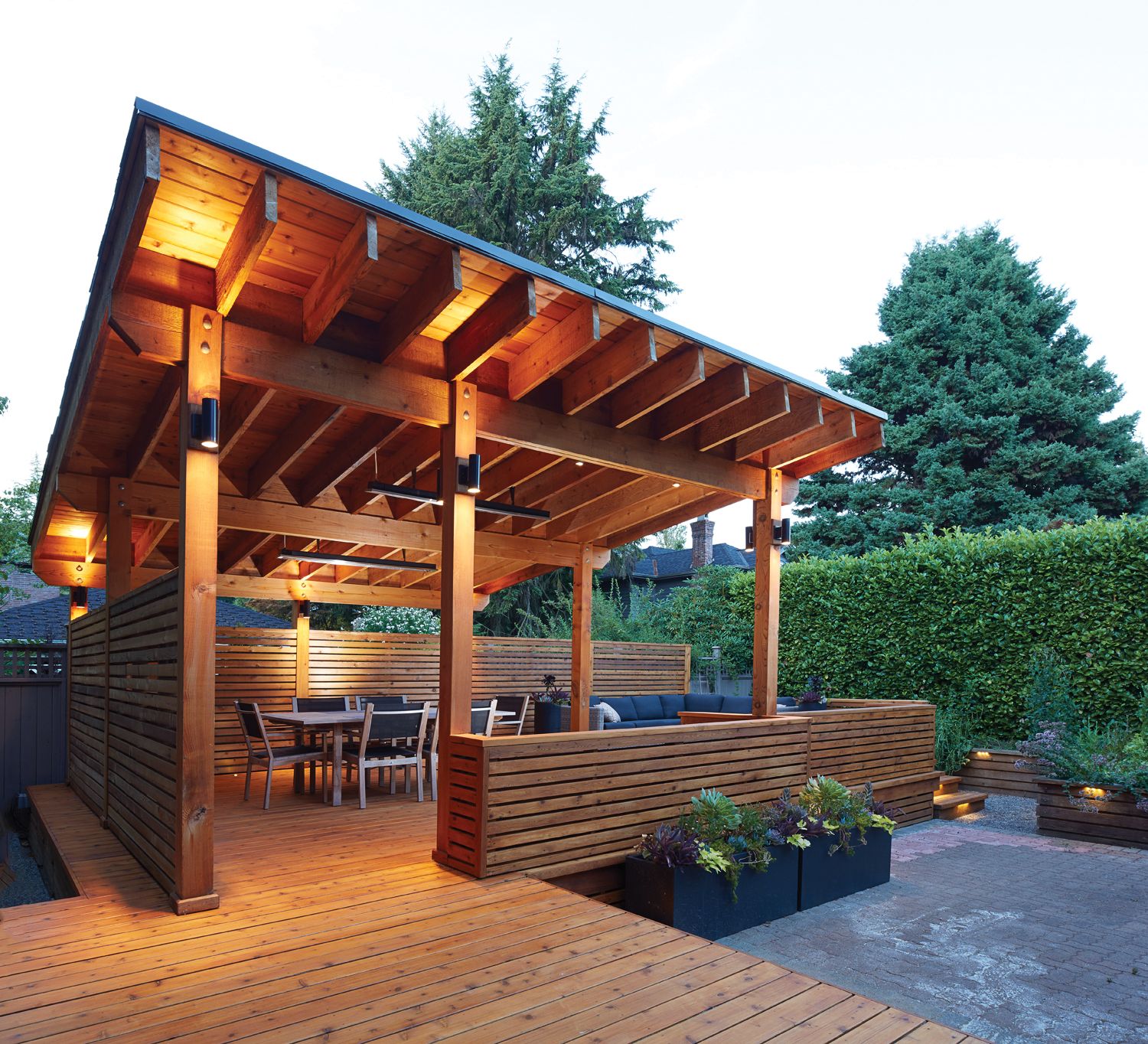Adding a deck to your house is the easiest and most affordable way to increase your living space—and when it comes to deck design, the sky’s the limit. Multiple levels, shady overhead structures, and spa-like amenities are all within the realm of possibility. You can use online sites to create virtual decks and you can glean design ideas from the work others already have done. Take inspiration from these nine smart deck ideas for a well-designed space built just for you.
Add an Above-Ground Pool Deck
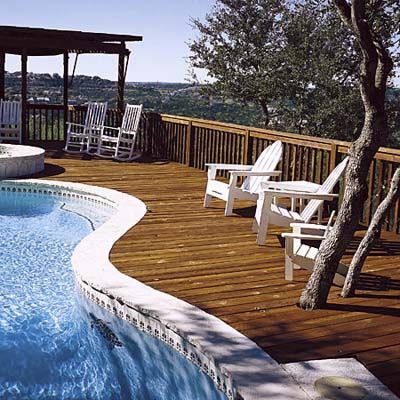
An above-ground pool deck can be a fantastic addition to your outdoor space, combining the joy of swimming with the comfort of a deck. A well-designed pool deck should provide ample space for lounging, entertaining, and safe access to the pool.
To create a cohesive look, choose decking materials that complement your home’s exterior and withstand moisture. Composite decking is an excellent choice for pool areas due to its waterproof durability and low maintenance requirements. Consider adding built-in seating or storage to maximize the deck’s utility.
Design and nature can work together to combat the heat and create a stunning pool deck. A pergola with a pulldown screen offers protection from the sun while adding architectural interest. Consider incorporating curves in your deck design to create a more organic flow around the pool. This approach not only adds visual appeal but can also help integrate existing trees or landscaping features into your deck design.
Choose outdoor furniture that is both water-resistant and fits the aesthetic of your deck for a seamless unity between style and function.
Add Different Kinds of Lighting to Your Deck
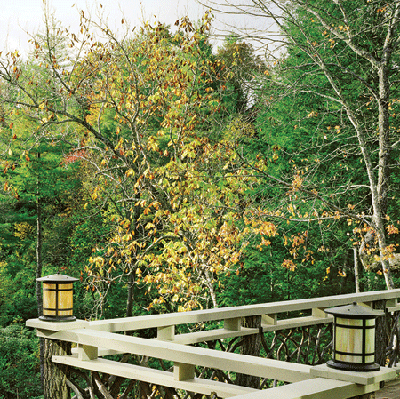
Proper lighting is essential for both safety and ambiance on your deck. While local codes may not always govern deck lighting, you need adequate light to prevent accidents and extend the usability of your outdoor space into the evening hours.
Install sconces around doorways and small recessed lamps on stair risers to ensure safe navigation at night. For ambient lighting, consider these options:
- Lanterns: Provide a warm, inviting glow and can be easily moved or replaced
- Spotlights mounted in nearby trees or on a pergola: Create dramatic lighting effects and highlight specific areas
- Solar-powered deck lights: Offer an eco-friendly and easy-to-install option that requires no wiring
When planning your deck lighting, aim for a balance between functionality and atmosphere. Use a combination of task lighting for specific areas (such as cooking or dining spaces) and ambient lighting to create a cozy environment for relaxation and entertainment. Adding dimmable lights can offer flexibility, allowing you to adjust the brightness to match the mood of any occasion.
Get Creative With Deck Railing Designs
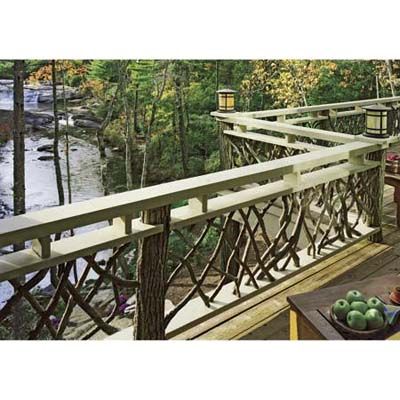
Deck railings are not just a safety feature, they can also play a significant role in the overall design of your outdoor space. Most building codes require railings to be at least 36 inches high for decks built more than 30 inches off the ground. Additionally, the gaps between balusters should not allow a 4-inch sphere to pass through.
When choosing railing materials and designs, consider both safety and style. Popular options include:
- Wood: Traditional and versatile, can be painted or stained to match your deck
- Metal: Offers a modern look and durability, with options like steel cable or tubular piping
- Glass panels: Provide unobstructed views and a sleek, contemporary appearance
- Composite: Low-maintenance and available in various colors and styles
Remember to check local building codes, as some areas may have restrictions on certain railing designs, such as horizontal members that children could climb like a ladder. To enhance both style and safety, consider combinations of materials, such as a wood railing with metal balusters, to create a unique and balanced design.
Add a Pergola to Your Deck
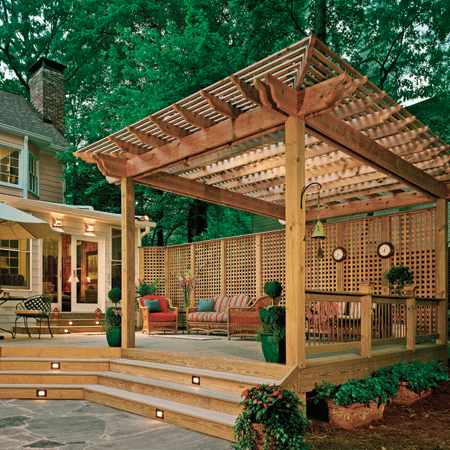
Pergolas make a great addition to any deck, offering both aesthetic appeal and functional benefits. These overhead structures provide shade from the sun and can create a sense of intimacy in your outdoor space. When designing a pergola for your deck, think about:
- Size and scale: Ensure the pergola is proportionate to your deck and home
- Material: Choose a material that complements your deck and is suitable for your climate
- Roof options: Decide between an open-roof design for filtered light or a solid roof for more protection
- Lighting: Incorporate lighting fixtures or string lights for evening ambiance
For greater privacy, consider adding lattice panels or growing climbing vines on your pergola. This not only creates a more secluded atmosphere but also adds a touch of natural beauty to your outdoor living area. Additionally, integrating retractable canopies or curtains can provide versatility, allowing you to control the amount of sun and privacy for various events.
Using Your Deck as a Buffer Zone
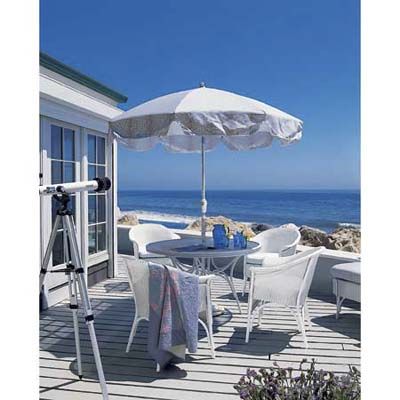
A well-designed deck can solve various landscaping challenges, such as uneven terrain or rocky areas. By creating a buffer zone between your home and the natural landscape, a deck provides a smooth transition and a stable foundation for outdoor living.
When installing wood decking, keep these tips in mind:
- Leave a quarter-inch gap between boards to allow for water drainage and wood expansion
- Choose durable wood species like redwood or cedar for better weather resistance
- Apply a high-quality sealant to protect the wood from moisture and UV damage
- Consider using hidden fasteners for a cleaner, more polished look
By carefully planning your deck’s layout and construction, you can create a seamless connection between your indoor and outdoor spaces while addressing any existing yard issues. Adding planters or built-in benches can help to further enhance the buffer zone, creating aesthetically pleasing transitions and maximizing functional space.
Consider Building a Composite Deck to Transform Your Space
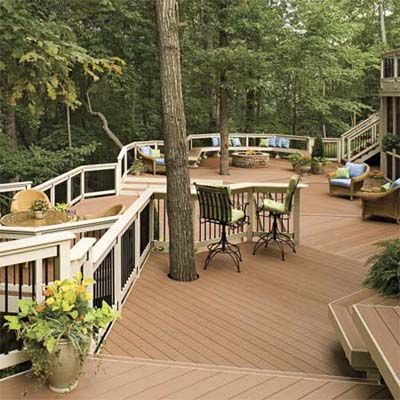
A multi-level, curved composite deck can transform your outdoor space into a luxurious entertainment area. This type of design allows you to create distinct zones for different activities while maximizing your available space. When planning a rambling deck, consider these elements:
- Traffic flow: Ensure easy movement between different levels and areas
- Focal points: Incorporate features like built-in planters or water features
- Privacy: Use varying heights and strategically placed screens for secluded areas
- Integration with nature: Design around existing trees or landscaping features
Composite decking materials offer numerous benefits for this type of complex design, including low maintenance, durability, and resistance to fading and staining. Adding outdoor furniture and decor can help delineate the various zones, enhancing the utility and appeal of each section.
Learn more about synthetic materials for a high-tech, low-fuss deck.
Incorporate Multiple Levels on Your Deck
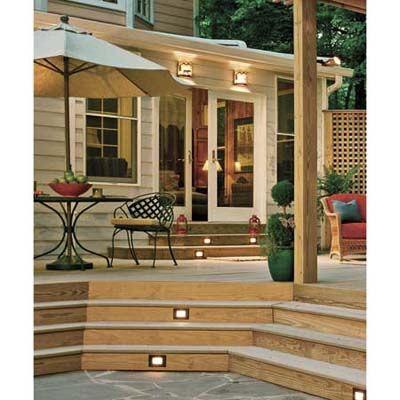
Incorporating multiple levels in your deck design can add visual interest and create distinct functional areas. When planning a multi-level deck, you should bear these tips in mind:
- Break up long staircases: If you have a significant height difference, split the stairs into shorter runs with landings in between
- Incorporate built-in seating: Add benches or seating areas at different levels to maximize usable space
- Create vantage points: Use different levels to provide varied views of your property or surrounding landscape
- Define spaces: Use level changes to separate dining areas, lounging spaces, and other functional zones
Incorporate Lower Levels on Your Deck for Unobstructed Views
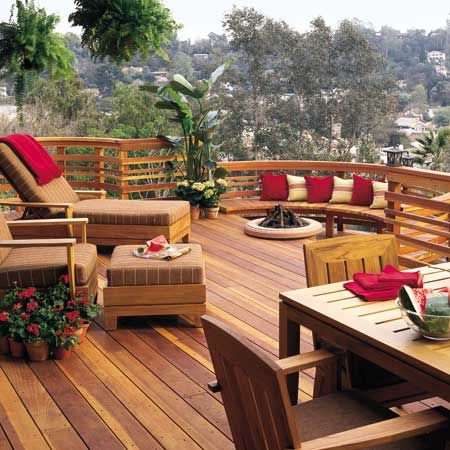
A clever design technique is to build a lower-level curved bench, as shown here. This not only provides additional seating but also ensures that the railing on the lower level doesn’t obstruct the view for those seated on the upper level. This thoughtful approach to deck design allows you to maximize both functionality and aesthetics. Additionally, incorporating varied plants or shrubs around the different levels can enhance the visual appeal, making each area feel unique and inviting.
Build an Outdoor Deck Kitchen
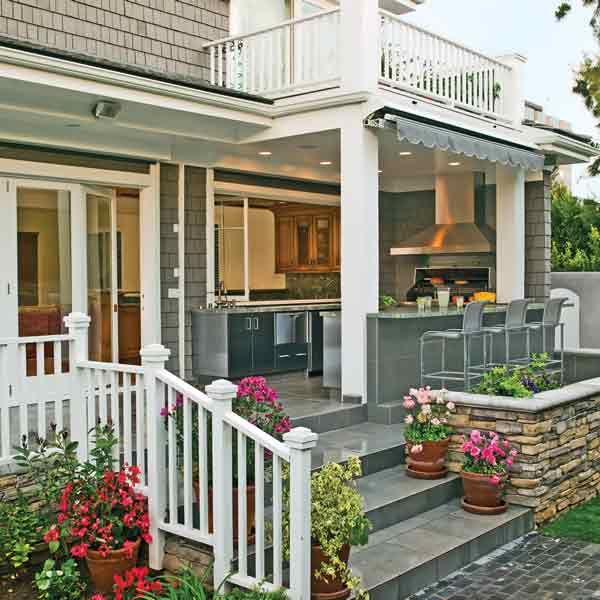
An outdoor kitchen can transform your deck into the ultimate entertainment space. When designing an outdoor kitchen on your deck, think about:
- Location: Position the kitchen against a wall for easier utility connections
- Layout: Plan for efficient workflow with dedicated areas for prep, cooking, and cleaning
- Appliances: Choose weather-resistant appliances designed for outdoor use
- Storage: Incorporate cabinets and drawers to keep utensils and supplies organized
- Countertops: Select durable materials that can withstand the elements, such as granite or concrete
A sliding window above the countertop, as shown in the image, can facilitate the easy passing of plates and kitchen essentials between indoor and outdoor spaces. This feature enhances the functionality of your outdoor kitchen and creates a seamless connection between your indoor and outdoor living areas. Adding a pergola or canopy over the kitchen area can provide additional protection from the elements, making the space usable in various weather conditions.
Make your open-air kitchen a prize-worthy cook space with this plan for a perfect outdoor kitchen. Add outdoor dining spaces in other places with smart ideas for outdoor kitchens and dining.
Our Conclusion
Designing the deck of your dreams requires careful planning and consideration of various elements, from layout and materials to lighting and amenities. By incorporating multi-level designs, thoughtful lighting, and functional features like outdoor kitchens, you can create a versatile and inviting outdoor space that enhances your home and lifestyle. Remember to balance aesthetics with practicality, and always check local building codes before starting your project.
